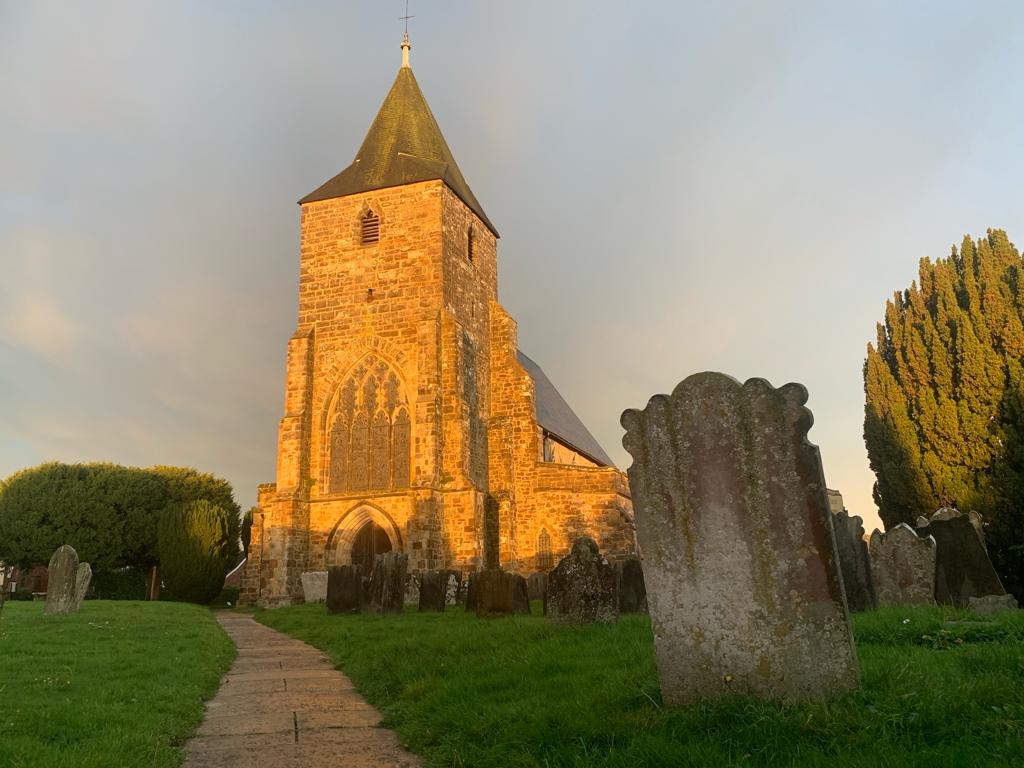St Mary’s
The earliest written evidence of a church at Ticehurst is a reference to “Adam, Presbyter de Tychenherste” in a document dated 1180. Nothing definitely of that period remains and what is seen today is almost all of the late 14th century, though there has been much restoration and alteration in the centuries since.
The church is close to the centre of the village and at the north end of over two acres of its churchyard are parts which are still open for burial.
Externally the appearance of St Mary’s changed most at the end of the 19th Century when crenellations were added to the side walls, porch and turret.

Internally the building divides into the tower vestry and ringing platform at the west end, the Nave with two side aisles in the middle and at the east end the sanctuary, chancel and two side chapels.
In 1856 the chancel had to be rebuilt from nearly ground level and this was done in the original style. The sanctuary has two important stained glass windows; a small one with medieval glass showing a ‘doom’ (sinners being taken to hell!), while the great east window of 1879, the central light of which won a prize at the Paris exhibition of 1878, shows many scenes including the passion of Christ.
The north chapel has many memorials to the Courthope family, while the south (formerly Pashley) chapel now contains the clergy vestry and the organ, which was erected in 1909.The choir stalls in the chancel and the lectern in the nave were made by ‘Mouseman’ Thompson of Kilburn, Yorkshire, and the stalls and lectern have his signature mouse carved on them.
The nave also contains the memorials to those men of Ticehurst who died in the two world wars. The church font has a fine 16th Century carved oak cover. Six of the windows in the side aisles are of late 19th or early 20th Centuries and depict biblical topics; the seventh is filled with medieval glass.
A unique feature of St Mary’s is the set of pew-length tapestry kneelers, designed and made by local people between 1982 and 2007. They depict a variety of local and biblical scenes and subjects, many were given in memory of parishioners.
The great west window in the tower includes portrayals of the four gospel saints, however as the face of St Mark had faded badly, it was renewed in 1984 by inserting that of the church’s longest serving vicar, The Reverend Arthur Eden 1851-1908, a much loved pastor who did much to prepare St Mary’s for the 20th Century.
The tower houses six bells made by Thomas Janaway of Chelsea in 1771, and a clock which was installed in 1835.
A printed version of our online Visitor Guide can be found as you enter the church, and there is an additional visitors’ corner in the South aisle where further information is available to help you get the most from your visit.
Our Prayer Corner offers suggestions for prayer and a prayer request box. Names are added to a book which is placed on the altar and prayed over during services. If you would like personal prayer please contact the vicar.
The church is open from 9 am to 4 pm daily.
